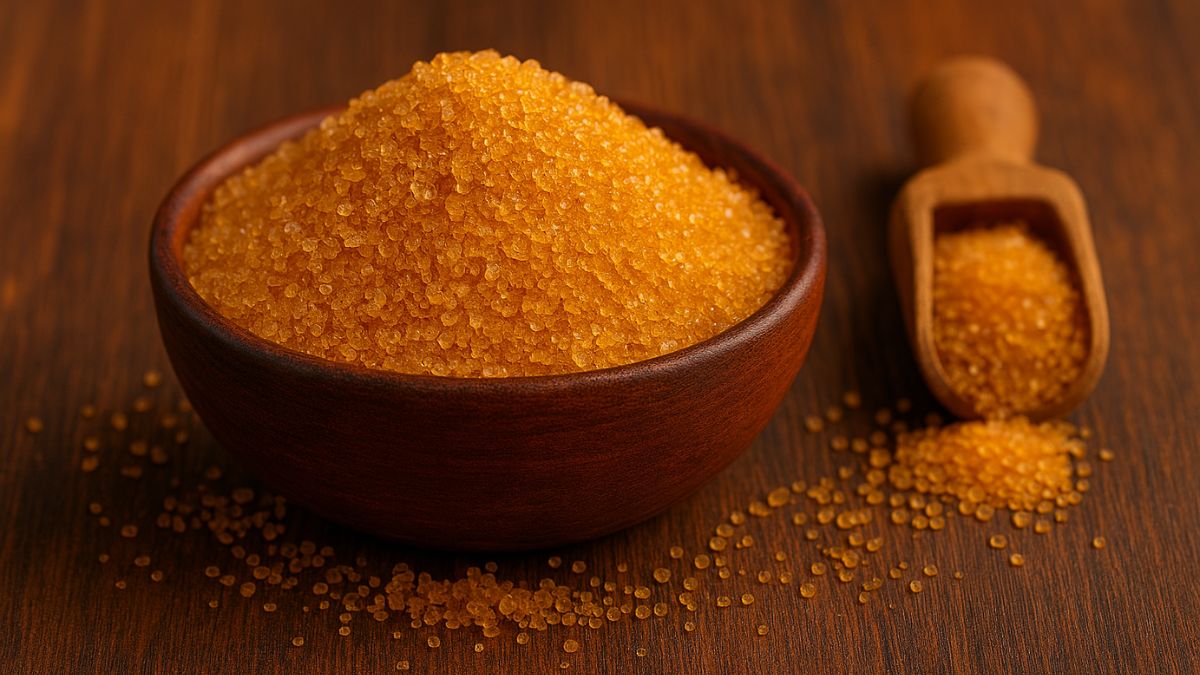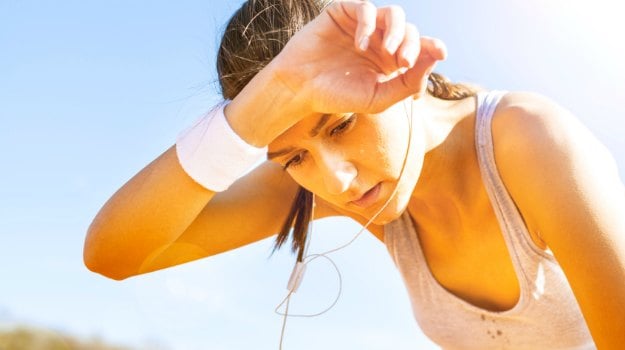It was just another day in Seattle. Amy Roe, 42-year-old author and three-time Boston Marathon runner, had just put in her miles - 12 of them. And, after running almost a half-marathon, she was sweating.
On most days, this would not be noteworthy. No one was dying. No one was bleeding. But Roe's very normal bodily function was met with disapproval at a local Starbucks in an upscale part of town, she said. "You look like you just did a class," a woman asked Roe. "Or swimming?" "Um, running," Roe said. "I just . . . sweat a lot."Though that was the beginning and end of the interaction, Roe was humiliated. As she explained in a recent Guardian piece: "I threw off my damp running cap and flipped up the hood of my sweatshirt in embarrassment. I wanted to dive deep into that Lululemon Scuba and never come back up for air." She didn't even stop to get half-and-half on the way out. Roe had been "sweat-shamed," she said."Sweat-shaming is when someone points out your sweatiness as a way to signal disapproval," she wrote. "Like its counterparts, slut-shaming and fat-shaming, sweat-shaming is aimed mainly at women, who are actually not supposed to sweat at all." In a telephone interview with The Washington Post, Roe elaborated on her plight. As presented in her piece, the woman who had "shamed" her had barely spoken to her. Was the woman's intent really malicious - and, as Roe implied, the result of sexism? "Maybe I'm hypersensitive," Roe said. "But I kind of feel like there's nuances in how people communicate. I feel like I'm a good reader and judge of intentions." Roe, in part, blamed geography.
"Seattle is kind of a passive-aggressive place," she said. "Somewhere else, other people would be really upfront about it. In Seattle, you'd be more likely to make a comment that you notice something about somebody." But this story was about more than the quirky mores of the Pacific Northwest. Roe was fighting on yet another front in the culture wars - in the ongoing debate about microaggressions, trigger warnings and the need for people to check their privilege. And the battle against sweat shaming may just be getting started. "Are woman not allowed to sweat anymore?" Elizabeth Kennedy wrote in Australia's The Glow last month. "Were we ever? While men are idolised and salivated over in every spritzed photograph, I have never seen an advertisement with women jogging where at any point she is even the slightest bit shiny."Kennedy wrote that she was shamed after sweating in, ironically, a hot yoga class. Her teacher, she said, praised her practice, saying she had "nailed it" - before calling her out for perspiration.
"While I was humbly thanking her and simultaneously singing 'nailed it' in my head, she quickly followed up with 'but you were perspiring heavily,'" Kennedy wrote. "This was accompanied by a worried look on her face, as if I had had a stroke in the middle of class." Roe said that people who worry about how they look when they work out may not work out in the first place."I'm pretty accomplished and relatively fast, not overweight and obese," Roe said. "If it can affect me - and obviously I'm less vulnerable to this kind of thing than other people - presumably it can affect a person out there running for the first time. People are afraid to exercise for how they look doing it." Unfortunately, Roe said, there was also the possibility she would be perceived as a maniac for bringing up this issue in the first place. "I hope I don't don't end up sounding like a crazy victim type person," Roe said. "First-world problems, the height of liberal PC or whatever. I don't want to come across that way, but that's the chance you take." Indeed, many took the chance to pillory Roe. Her reaction to a seemingly minor exchange got some conservatives, among others, riled up."Now, this is pretty interesting, because I myself can remember quite a few times that I've made fun of dudes for being sweaty," Katherine Timpf wrote at National Review about Roe's experience. "And I remember that everyone from Donald Trump to cable-news pundits was discussing how much Marco Rubio was sweating after the last GOP debate. Come to think of it, I also just remembered that men's deodorant exists, and that that just might mean that sweating freely is probably not encouraged for anyone of any gender." "Harrowing stuff, I'm sure you'll agree," one blogger wrote. "Ms Roe is what we must henceforth refer to as a sweat-shame survivor." For Roe, however, sweat shaming is just part of body shaming - a phenomenon that "affects all people," she said, but one that often seems to target women. "The idea that we have to be ladylike - that hasn't gone away," Roe said. ". . . The idea that women are getting Botox on their head so their head doesn't get sweaty - I never heard about men doing that."Roe's point may not be widely known: Though Botox may be more commonly associated with Hollywood stars of a certain age, it's also used to treat "severe primary axillary hyperhidrosis" - underarm sweating. "BOTOX is injected into the skin to treat the symptoms of severe underarm sweating (severe primary axillary hyperhidrosis) when medicines used on the skin (topical) do not work well enough in people 18 years and older," reads information from Botox's manufacturer on this Web site - where, it's worth noting, three of the four models used in associated advertisements are women. The site added: "It is not known whether BOTOX is safe or effective for severe sweating anywhere other than your armpits."© 2015 The Washington Post
On most days, this would not be noteworthy. No one was dying. No one was bleeding. But Roe's very normal bodily function was met with disapproval at a local Starbucks in an upscale part of town, she said. "You look like you just did a class," a woman asked Roe. "Or swimming?" "Um, running," Roe said. "I just . . . sweat a lot."Though that was the beginning and end of the interaction, Roe was humiliated. As she explained in a recent Guardian piece: "I threw off my damp running cap and flipped up the hood of my sweatshirt in embarrassment. I wanted to dive deep into that Lululemon Scuba and never come back up for air." She didn't even stop to get half-and-half on the way out. Roe had been "sweat-shamed," she said."Sweat-shaming is when someone points out your sweatiness as a way to signal disapproval," she wrote. "Like its counterparts, slut-shaming and fat-shaming, sweat-shaming is aimed mainly at women, who are actually not supposed to sweat at all." In a telephone interview with The Washington Post, Roe elaborated on her plight. As presented in her piece, the woman who had "shamed" her had barely spoken to her. Was the woman's intent really malicious - and, as Roe implied, the result of sexism? "Maybe I'm hypersensitive," Roe said. "But I kind of feel like there's nuances in how people communicate. I feel like I'm a good reader and judge of intentions." Roe, in part, blamed geography.
"Seattle is kind of a passive-aggressive place," she said. "Somewhere else, other people would be really upfront about it. In Seattle, you'd be more likely to make a comment that you notice something about somebody." But this story was about more than the quirky mores of the Pacific Northwest. Roe was fighting on yet another front in the culture wars - in the ongoing debate about microaggressions, trigger warnings and the need for people to check their privilege. And the battle against sweat shaming may just be getting started. "Are woman not allowed to sweat anymore?" Elizabeth Kennedy wrote in Australia's The Glow last month. "Were we ever? While men are idolised and salivated over in every spritzed photograph, I have never seen an advertisement with women jogging where at any point she is even the slightest bit shiny."Kennedy wrote that she was shamed after sweating in, ironically, a hot yoga class. Her teacher, she said, praised her practice, saying she had "nailed it" - before calling her out for perspiration.
"While I was humbly thanking her and simultaneously singing 'nailed it' in my head, she quickly followed up with 'but you were perspiring heavily,'" Kennedy wrote. "This was accompanied by a worried look on her face, as if I had had a stroke in the middle of class." Roe said that people who worry about how they look when they work out may not work out in the first place."I'm pretty accomplished and relatively fast, not overweight and obese," Roe said. "If it can affect me - and obviously I'm less vulnerable to this kind of thing than other people - presumably it can affect a person out there running for the first time. People are afraid to exercise for how they look doing it." Unfortunately, Roe said, there was also the possibility she would be perceived as a maniac for bringing up this issue in the first place. "I hope I don't don't end up sounding like a crazy victim type person," Roe said. "First-world problems, the height of liberal PC or whatever. I don't want to come across that way, but that's the chance you take." Indeed, many took the chance to pillory Roe. Her reaction to a seemingly minor exchange got some conservatives, among others, riled up."Now, this is pretty interesting, because I myself can remember quite a few times that I've made fun of dudes for being sweaty," Katherine Timpf wrote at National Review about Roe's experience. "And I remember that everyone from Donald Trump to cable-news pundits was discussing how much Marco Rubio was sweating after the last GOP debate. Come to think of it, I also just remembered that men's deodorant exists, and that that just might mean that sweating freely is probably not encouraged for anyone of any gender." "Harrowing stuff, I'm sure you'll agree," one blogger wrote. "Ms Roe is what we must henceforth refer to as a sweat-shame survivor." For Roe, however, sweat shaming is just part of body shaming - a phenomenon that "affects all people," she said, but one that often seems to target women. "The idea that we have to be ladylike - that hasn't gone away," Roe said. ". . . The idea that women are getting Botox on their head so their head doesn't get sweaty - I never heard about men doing that."Roe's point may not be widely known: Though Botox may be more commonly associated with Hollywood stars of a certain age, it's also used to treat "severe primary axillary hyperhidrosis" - underarm sweating. "BOTOX is injected into the skin to treat the symptoms of severe underarm sweating (severe primary axillary hyperhidrosis) when medicines used on the skin (topical) do not work well enough in people 18 years and older," reads information from Botox's manufacturer on this Web site - where, it's worth noting, three of the four models used in associated advertisements are women. The site added: "It is not known whether BOTOX is safe or effective for severe sweating anywhere other than your armpits."© 2015 The Washington Post
Advertisement









